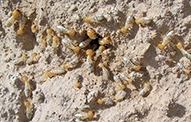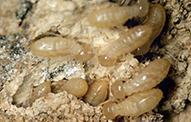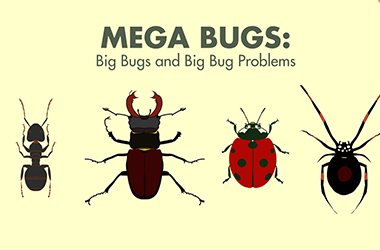Termite Facts
- Size: Termite workers only measure approximately 1 cm
- Often called: “silent destroyer” because they may be secretly hiding and thriving in your home or yard without any immediate signs of damage
- Appearance: Termites can be identified by their straight, beaded antennae, uniform waists, and wings of equal size. (Ants have elbowed antennae, constricted waists and forewings that are longer than the hind wings.)
Termite Behavior
Termites are usually cryptic, meaning that they don’t come out into the open which makes them difficult to detect. Even when they are visible within the home as flying insects, termites can often be mistaken for ants. Some homeowners will dismiss the termites as pesky ants (which often swarm at the same time of year) and ignore them without taking any preventive or extermination measures. This allows established termite infestations to grow exponentially. While they are only a few millimeters in length, their feeding habits are capable of causing costly damage to property.
Termites primarily feed on cellulose, a part of wood, but can also damage paper, books, insulation, and even swimming pool liners and filtration systems. All termites feed on detritus (dead plants and trees as well as dead parts of living trees, including wood). Unfortunately, all homes, regardless of their construction type, can provide cellulose food for termite infestation. House foundations, furniture, shelves and even books are all possible feeding sites for termites. Termites can harm living trees and shrubs but are more often are a secondary invader of woody plants already in decline.
- Get Rid of Desert Termites
- Infestation and Damage
- Bites and Treatement




